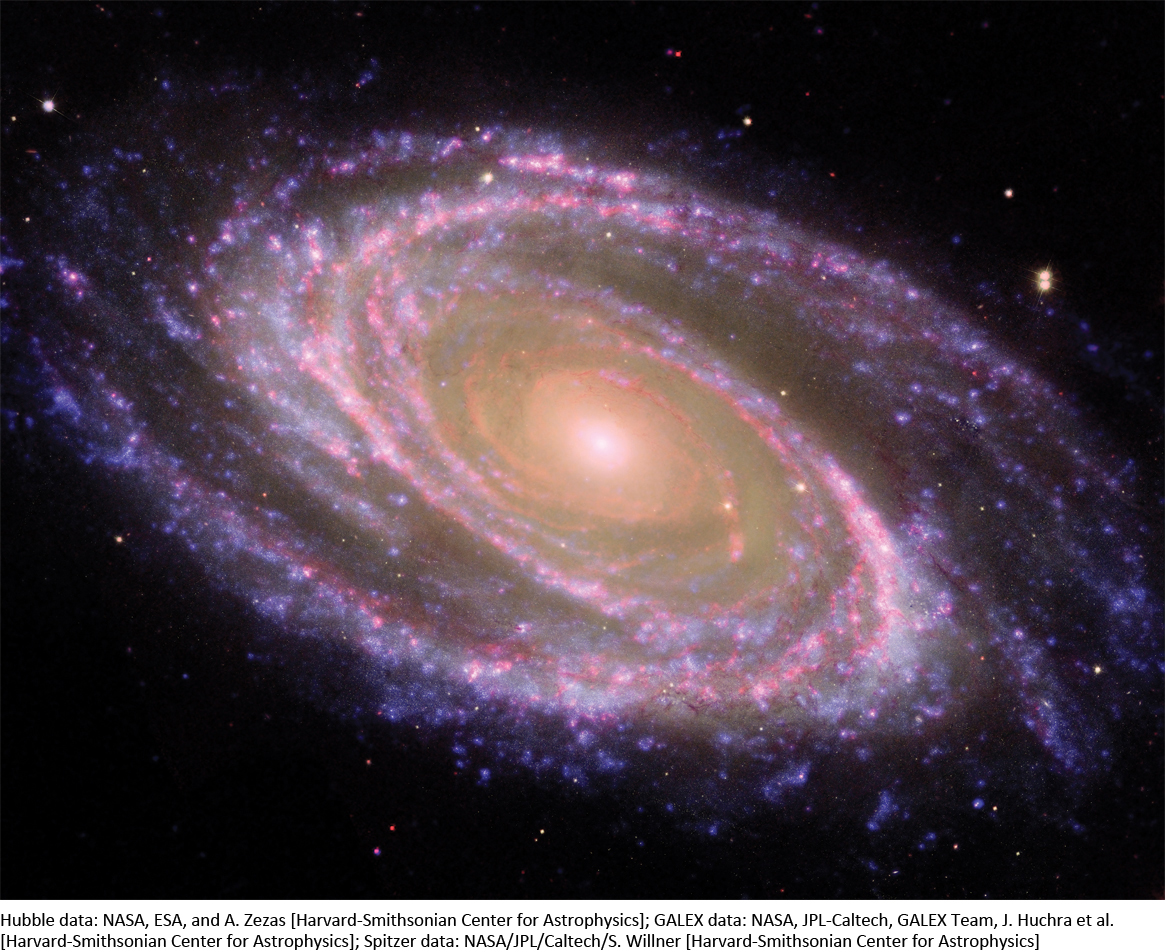33

Decoding the Hidden Messages in Starlight
CHAPTER LEARNING OBJECTIVES
By reading the sections of this chapter, you will learn:
- 2-1 Light travels through empty space at a speed of nearly 300,000 km/s
- 2-2 Glowing objects, like stars, emit an entire spectrum of light
- 2-3 An object’s temperature is revealed by the most intense wavelength of its spectrum of light
- 2-4 An object’s chemical composition is revealed by the unique pattern of its spectrum of light
- 2-5 An object’s motion through space is revealed by the precise wavelength positions of its spectrum of light
- 2-6 Telescopes use lenses, mirrors, and electronics to concentrate and capture incoming light for study
34
The sky overhead encourages us to wonder about the nature of the universe—places so distant that we will likely never visit them easily. Sunlight illuminates our day and twinkling stars decorate our nighttime sky. All the glowing objects in the sky reveal themselves to us, even though they are very far away, by sending their light our way. Because these objects are so distant, the only information we have about them comes from the light we can capture with our telescopes. Fortunately, the physical properties of light are predictable and well understood. In this chapter we will first consider the basic properties of light; then we will discover how astronomers use light to reveal temperature, chemical composition, and motion through space of all the glowing objects in the sky. We will conclude with a discussion of how astronomers capture and enhance starlight in modern telescopes, in order to study it. The technology developed for the most modern of telescopes influences other technologies, including the high-quality cameras in cell phones and the lightweight materials they are made of.